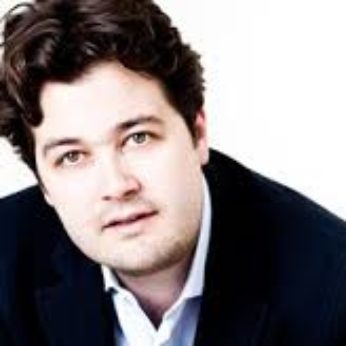Composer: Karl Amadeus Hartmann (b. 1905 - d. 1963)
Performance date: 04/07/2016
Venue: St. Brendan’s Church
Composition Year: 1939 revised 1959
Duration: 00:21:25
Recording Engineer: Richard McCullough, RTÉ lyric fm
Instrumentation: 2vn, va, vc
Instrumentation Category:Large Mixed Ensemble
Instrumentation Other: va, vn, festival strings
Artists:
Tamsin Waley-Cohen -
[violin]
Lawrence Power -
[viola]
Festival Strings 2016 (Phoebe White, Siobhán Doyle, Kate Oswin, Eoin Ducrot [violin 1], Jane Hackett, Alicia Berendse, Cillian O'Breachain, Brendan Garde [violin 2], David Kenny, Lydia Abell, Ed Creedon [viola], Eugene Lamy Alves, Ghislaine McMullin, Aoife Burke [cello]) -
[string orchestra]

The times were so strange that it was impossible
to tell if you would survive them. The individual was exposed to devastation
and the degeneration of an age, in which our nation all but lost its soul. For
nowhere was there any deliverance, save in that the spirit of simple folk were
able to muster against it.
Hans Jakob von
Grimmelshausen Simplicius Simplicissimus [1668]
Hartmann’s Concerto Funebre was originally composed
in 1939 and titled Musik der Trauer (Music of Mourning).
Originally the piece was a response to the Nazi invasion of Czechoslovakia and
reflected the despair Hartmann felt at the expansion of Nazi influence. Hartmann was a staunch opponent of the Third
Reich, despite remaining in Germany his whole life. As a protest statement and
in order to avoid becoming a cultural
ornament of the Nazi party, Hartmann undertook a form of inner emigration. He
took no part in German musical life and would not allow his music to be
performed in Germany. As a result, the first performance of Concerto Funebre was in St. Gallen,
Switzerland. The piece was reworked twenty years later in 1959 as Hartmann
re-evaluated or destroyed much of what he wrote during World War II.
Concerto Funebre itself was
inspired by the Nazi annexation of Czechoslovakia in 1938. It has four
movements, played without a break – a brief introduction, a funeral march, a
ferocious Scherzo, and a final chorale. The first movement is a lamentation,
spotlighting the violin soloist and setting the elegiac tone for the whole work.
The violin’s melody is from the Czech Hussite Chorale, Ye Who Are Warriors of God, used in the 15th century Hussite wars
as a battle song to instill fear in the opposing army. The simplicity of this
sombre opening is contrasted with the highly emotional Adagio where the violin’s lamentation unfolds over a slow march in
the strings, climaxing in an outcry in the violin’s highest register. In the
deeply moving coda, the violin joins the strings in the slow march.
The Scherzo is a terrifying danse macabre, frenetic energy takes over and the mood becomes
fearful and desperate. Hartmann employs all his compositional resources from
dense polyphony to obsessive ostinati
to explosive effect. Each feverish climax is tempered by a pianissimo theme in the violin’s lowest register. The second time
this leads to a brilliant cadenza followed by a coda in the mood of the Adagio.
The Choral – Langsamer
Marsch is based on a Russian melody, also used by both Britten and
Shostakovich, known variously as For the
Fallen Revolutionaries and You fell
in Battle. This unfolds in a series
of serene responses between soloist
and strings, leading eventually to a coda that once again recalls the Adagio only to conclude with a
devastatingly dissonant chord from the entire ensemble representing a
combination of outrage, defiance and triumph in the hope for justice.
Copyright © 2025 West Cork Music. All rights reserved.
Designed and developed by Matrix Internet